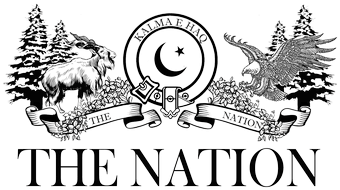ISLAMABAD: Women contributed more than 38
percent of agenda to par
liamentary business during 2016-2017, says Free and Fair Election Network (FAFEN) in a report on the performance of women par
liamentarians issued on the eve of the International Women’s Day.
According to the report, the women lawmakers in the Nation
al Assembly and the Senate contributed 62
percent and 13
percent to the agenda, respectively. The women lawmakers of the Nation
al Assembly outperformed their male counterparts, while the participation of women Senators was also significant in proportion to their representation in the House.
Women members actively participated in the proceedings through regular attendance and substantive contribution to the par
liamentary business particularly in the Nation
al Assembly during the reporting periods – May 31, 2016 to February 7, 2017 (Nation
al Assembly) and April 14, 2016 to February 20, 2017 (Senate).
During this period, a total of 4,132 agenda items were included on the Orders of the Day – 2,123 in the Nation
al Assembly and 2,009 in the Senate.
The
percentage of women’s contribution to the par
liamentary business is remarkably high in the Nation
al Assembly where nearly two thirds (62 per cent) business was originated by women individually and three
percent in collaboration with their male colleagues. In the Senate, women sponsored 13
percent par
liamentary business individually and two
percent jointly.
On average, a woman lawmake
r sponsored 18 agenda items individually in the Par
liament, whereas a male lawmake
r sponsored seven agenda items. In the Nation
al Assembly, a woman lawmaker brought 19 agenda items against three agenda items by her male colleague. In the Senate, a male lawmake
r sponsored more agenda items (20) on average than women (14 agenda items).
The Nation
al Assembly held 71 sittings and the Senate 87 sitti
ngs during their respective reporting periods. In the Nation
al Assembly, a woman lawmaker attended average 48 (67
percent) sittings, whereas a male lawmaker attended 41 (58
percent) sittings. In the Senate, a woman lawmaker attended average 52 (60
percent) sittings whereas a male lawmaker attended 57 (65
percent) sittings. Two women in the Nation
al Assembly attended 100
percent sittings, while the lowest attendance of any woman was six
percent. Similarly, in the highest and lowest women attendance in the Senate was 93
percent and 21
percent, respectively.
The women lawmakers of the Nation
al Assembly initiated 21 out of 120 bills (18
percent) on their own and 23 (19
percent) bills in collaboration with their male colleagues. They sponsored 31 out of 67 resolutions (46
percent) in the Nation
al Assembly, while collaborated with male lawmakers for moving 13 (19
percent) resolutions. The women lawmakers also sponsored ten out of 106 bills introduced in the Senate (six on their own and four with male lawmakers) and 13 out of 90 resolutions (eight on their own and five with male lawmakers).
The women par
liamentarians also kept a close vigil on the government by asking questions and raising calling attention notices. They asked 1,208 (67
percent) Questions, raised 36 (70
percent) Motions under Rule 259 and submitted 44 (75
percent) CANs in the Nation
al Assembly. The women senators submitted 233 (16
percent) Questions, moved 14 (19
percent) Motions under Rule 218, sponsored 17 (16
percent) adjournment motion and submitted 19 (17
percent) Calling Attention Notices (CANs).











